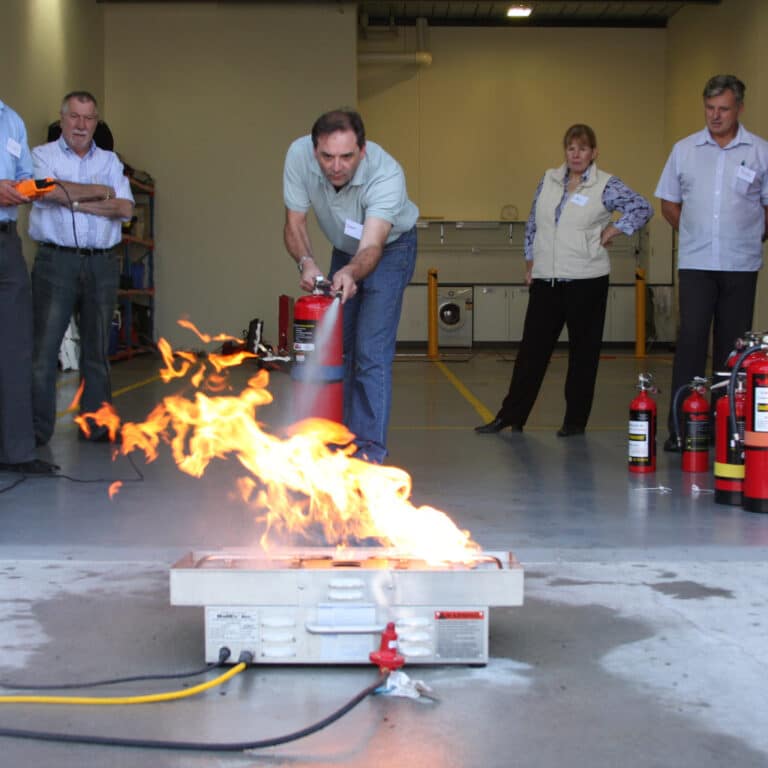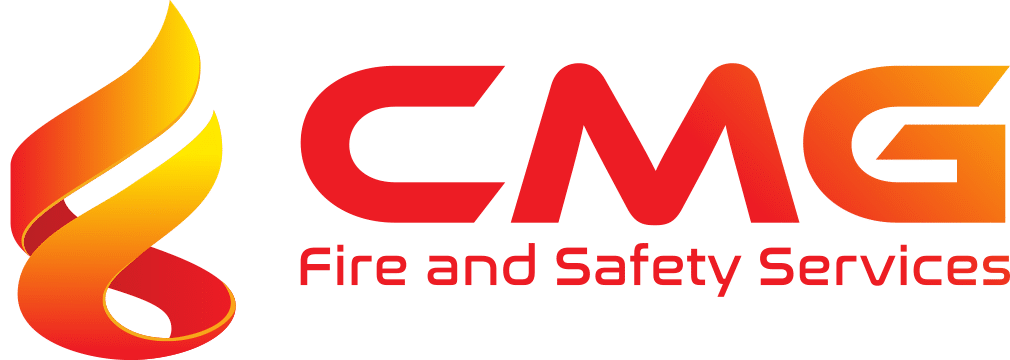
Equip yourself with the right skills in case of a fire accident
How to operate a fire extinguisher
Portable fire extinguishers are used for small, contained fires. In the case of a fire emergency, first you need to identify a safe way to exit the building. Locating a clear exit path is one of the main factors covered during emergency evacuation drills. As soon as you have clear access, it’s now time to pick up the fire extinguisher.
Step 1: Position yourself
Stand firmly and face the fire with your back to the exit. Maintain a safe distance away from the flames, between 2 and 3 metres.
Step 2: Discharging the extinguisher
The acronym PASS is used to easily remember the procedure: Pull, Aim, Squeeze and Sweep:
- P: Pull the pin on the fire extinguisher.
- A: Aim the nozzle toward the base of the fire.
- S: Squeeze the lever to begin discharge.
- S: Sweep the nozzle from side to side while aiming at the base of the fire. Continue until the flames die out.
Step 3: Double-check the scene
Once the flames appear to have died out, keep an eye on the scene a while longer to ensure that the fire doesn’t reignite. If it does, start the PASS process again.
While the above steps may seem fairly straightforward, they have been simplified to give you a fair idea of what to do. The most effective way to learn how to properly operate a fire extinguisher is to attend fire extinguisher training conducted by qualified fire and safety professionals.
What are the 6 classes of fire?
Fires are grouped into 6 categories according to which type of material started the fire.
- Class A fires: Combustible materials such as paper, wood and fabric
- Class B fires: Flammable liquids such as petrol, turpentine and paint
- Class C fires: Flammable gases such as butane, methane and hydrogen
- Class D fires: Combustible metals such as magnesium, lithium and potassium
- Class E fires: Electrical fires caused by electrical equipment
- Class F fires: Cooking fats and oils such as from fryers and chip pans
Categorising them in this way helps with identifying the type of extinguisher that may be needed in a fire emergency.
The different types of fire extinguishers available
The main types of fire extinguishers include water, foam, dry powder, carbon dioxide, and wet chemicals. The type of extinguisher needed will depend on the class of fire. There is no single type of extinguisher that can put out all classes of fire.
From the common types of fire extinguishers, there are different versions of the dry powder ones. Together there are 6 main types of extinguishers, which can be differentiated by the colour band at the top of each cylinder.
- Water (red band)
- Foam (blue band)
- Dry powder – Standard (white band)
- Dry powder – High performance (white band)
- Carbon dioxide (black band)
- Wet chemical (yellow band)
It is critical to use the correct type of extinguisher for the relevant class of fire because if an incorrect extinguisher is used, the fire could reignite and result in a worse and more dangerous situation.
When does a fire extinguisher need to be replaced?
Extinguishers typically have a shelf life of 5 years starting from the manufacture date. Beyond this period, they need to get pressure tested or replaced. Extinguishers need to be inspected every six months.
The AS2444 Australian Standard for fire extinguishers
If there are one or more portable extinguishers in a workplace, employers, main contractors, self-employed persons or a person who is in control of the workplace must adhere to the AS2444 Australian Standard for extinguishers. This standard sets out the framework to select the correct type of extinguisher and specifies requirements for its use, location and distribution.
The AS2444 is broken down into 6 sections covering the scope for portable fire extinguishers and fire blankets:
- Scope and General: Definitions and general information on the importance of being certified.
- Selecting the Fire Extinguisher: Choosing the correct type of extinguisher, as using the wrong one can increase the fire risk. Not all fire extinguishers are made of the same quality. Standards are set out according to the classifications and ratings in accordance with the Australian Fire Extinguisher Standards.
- Location of the Fire Extinguisher: The location and height must adhere to the AS2444 Australian Standard–a minimum of 10 centimetres off the ground and the top of the extinguisher should be no more than 1.2 metres above floor level.
- Distribution of Extinguishers in a Building: Fire risks differ in each workplace, so there is no general rule when it comes to the distance needed between fire extinguishers. A qualified fire certifier will conduct a hazard assessment to help determine the layout of the extinguishers unique to that building.
- Selecting and Distributing Extinguishers for Small Crafts and Vehicles: Choosing the correct type of extinguisher is especially important for vehicles and aircraft because it will also be for luggage and cargo on board. Extra types of fuel in the mode of transport can increase the fire risk.
- Selecting and Locating Fire Blankets: They are generally used for small Class A and B fires and can act as a thermal barrier against radiant heat. Fire blankets must be easily accessible and their location clearly marked.
These regulations are fine-tuned according to the layout and specific fire risks of each building.
Do it right with CMG Fire and Safety Services
To maintain the highest standard of fire safety in your workplace, enlist the help of CMG Fire and Safety Services. As a specialist in emergency management and fire safety, we offer a broad range of solutions, including OH&S services, fire warden training, emergency evacuation training, evacuation diagrams and more. Call us today on 1300 355 686 to discuss your fire safety needs.
